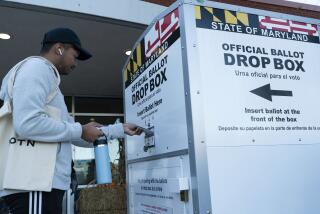Navigating the Supreme Court’s GPS ruling
By a surprisingly unanimous vote, the Supreme Court this week ruled that police must obtain a warrant before attaching a tracking device to a car or other vehicle. The decision is a welcome affirmation of the constitutional right to privacy in an era of advanced technology. But the majority opinion’s rationale was needlessly narrow. Whether there is a broad right to freedom from new kinds of intrusive electronic surveillance remains to be answered.
The case involved the conviction of Antoine Jones, a suspected drug dealer in the District of Columbia who was arrested after being monitored for 28 days by a global positioning system device surreptitiously attached to his Jeep by law enforcement agents without a warrant. The U.S. Court of Appeals for the District of Columbia issued a broad ruling in Jones’ favor, holding that the blanket electronic surveillance of a suspect violated the 4th Amendment’s ban on unreasonable searches and seizures. Although it would have been legal for the police to follow his car through the streets, the appeals court ruled, prolonged GPS monitoring “reveals an intimate picture of the subject’s life that he expects no one to have — short perhaps of his spouse.”
At the Supreme Court level, however, Justice Antonin Scalia focused not on the prolonged search but on the physical attachment of the GPS device to the Jeep. “The government physically occupied private property for the purpose of obtaining information,” Scalia wrote. Ever the advocate of interpreting the Constitution according to its original intent, he added: “We have no doubt that such a physical intrusion would have been considered a ‘search’ within the meaning of the 4th Amendment when it was adopted.”
The majority opinion is good news for Jones, but its emphasis on property rights is a throwback to the days before the court embraced a different test for deciding if a search was illegal: whether, as Justice John Marshall Harlan put it in a 1967 case, there is a “reasonable expectation of privacy.” As Justice Samuel A. Alito Jr. noted in his concurring opinion this week, the 1967 case, which involved the placement of listening devices on the outside of a telephone booth, “did away with the old approach.” (Scalia acknowledged the existence of the “reasonable expectation” test but did not apply it to the Jones case.)
The difference between the Scalia and Alito approaches is important. As both Alito and Justice Sonia Sotomayor pointed out, not every wireless surveillance will involve a physical interference with property. As wireless technology and cars become more sophisticated, Scalia’s test will become more and more irrelevant.
More to Read
A cure for the common opinion
Get thought-provoking perspectives with our weekly newsletter.
You may occasionally receive promotional content from the Los Angeles Times.






